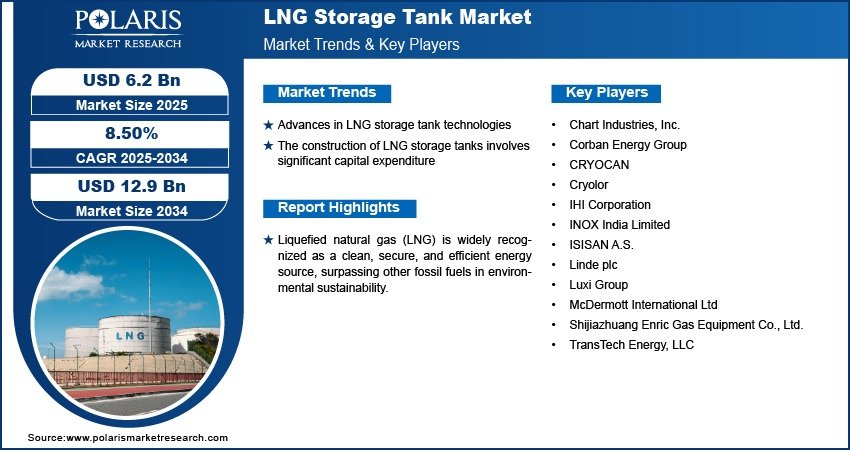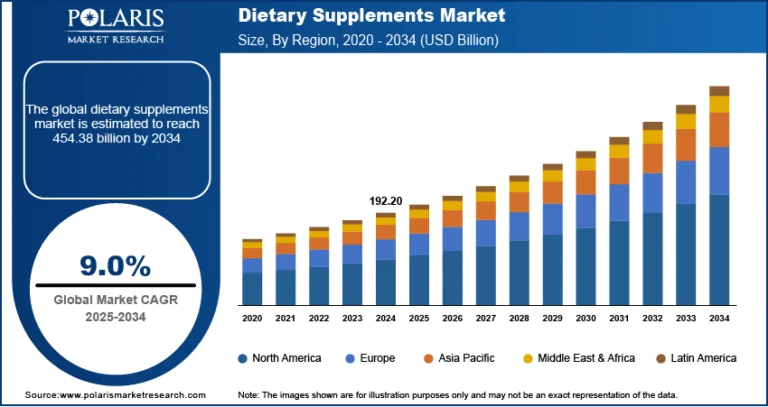LNG Storage Tank Market Projected to Hit USD 12.9 Billion by 2034 | CAGR: 8.50%

The global LNG Storage Tank Market was valued at USD 5.7 billion in 2024 and is anticipated to expand at a CAGR of 8.50% from 2025 to 2034. This robust growth is driven by the increasing focus on natural gas infrastructure development and the global shift towards clean fuel adoption. As countries work toward reducing carbon emissions and ensuring energy security, liquefied natural gas (LNG) has emerged as a preferred alternative to conventional fossil fuels, thereby creating strong demand for reliable and efficient LNG storage solutions.
Key Market Trends:
-
Rising LNG Demand Globally: The global appetite for LNG continues to grow due to its lower environmental impact and cost-effectiveness, encouraging investments in storage infrastructure.
-
Growth in LNG Trade Activities: Expanding international trade and exports of LNG are increasing the requirement for large-scale storage systems across ports and terminals.
-
Advancements in Storage Technologies: Technological innovation in tank insulation and containment systems is improving safety, reducing evaporation loss, and boosting operational efficiency.
-
Integration with Renewable Energy Systems: LNG storage tanks are increasingly integrated with hybrid energy solutions to ensure uninterrupted power supply during renewable downtime.
Market Size & Forecast:
|
Market size value in 2025 |
USD 6.2 Billion |
|
Revenue forecast in 2034 |
USD 12.9 Billion |
|
CAGR |
8.50% from 2025 – 2034 |
Request for Free Sample:
https://www.polarismarketresearch.com/industry-analysis/lng-storage-tank-market/request-for-sample
Market Overview:
LNG storage tanks are crucial components in the LNG value chain, enabling safe and efficient storage at cryogenic temperatures. These tanks are used at various stages, including liquefaction plants, transportation vessels, and regasification terminals. The growing emphasis on decarbonization and cleaner fuel alternatives is accelerating LNG infrastructure projects globally. Countries in Asia-Pacific, Europe, and the Middle East are investing heavily in LNG terminals, which, in turn, is boosting the demand for storage tanks with advanced design and high-capacity capabilities.
Moreover, rising consumption of LNG in power generation, transportation, and industrial sectors is prompting governments and private players to strengthen their storage capacity. This momentum is expected to continue over the forecast period, supported by favorable policies and international energy security commitments.
Key Market Opportunities:
-
Expansion of LNG import/export terminals offers lucrative opportunities for storage tank manufacturers.
-
Retrofitting and upgrading of aging storage facilities present strong prospects in developed regions.
-
Emerging economies with increasing energy needs are opening up new markets for LNG storage infrastructure.
Key Market challenges:
Key challenges in the LNG Storage Tank Market include high initial investment costs, complex regulatory compliance, safety concerns related to cryogenic storage, and technical difficulties in maintaining extremely low temperatures. Additionally, supply chain disruptions and fluctuating LNG prices can hinder infrastructure development and slow market adoption in emerging regions.
Market Scope:
The LNG Storage Tank market scope covers cryogenic tanks, atmospheric tanks, and underground tanks designed for LNG applications. The analysis includes segmentation by product type, material, capacity, and end-use industries, with detailed regional insights across North America, Europe, Asia-Pacific, Latin America, and the Middle East & Africa.As the global energy landscape continues to transition, the LNG storage tank market is poised to play a pivotal role in enabling a cleaner, more sustainable future.






